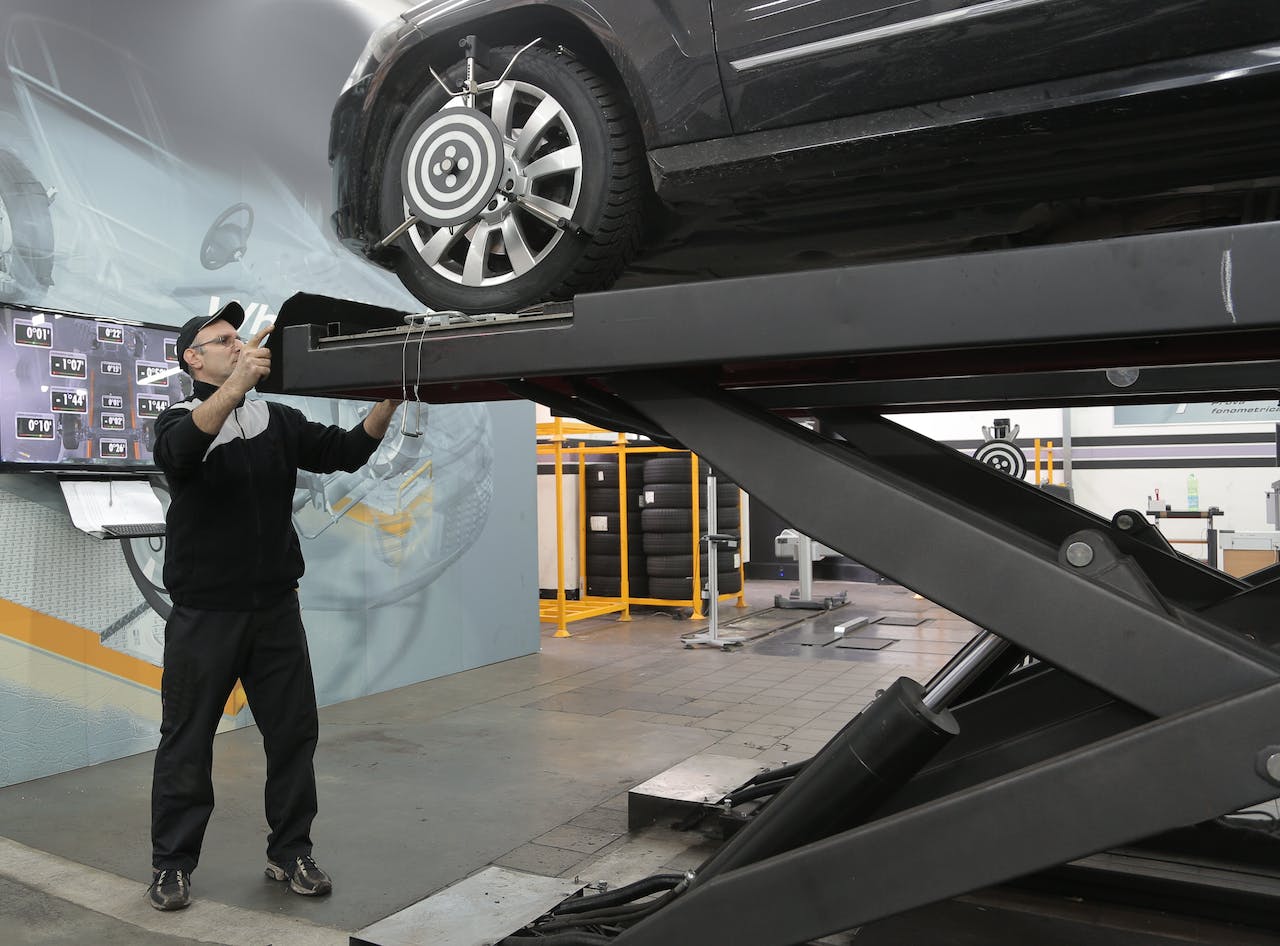Modern engines still need regular oil changes because engine oil keeps parts sliding, reduces friction, and helps prevent heat build up. Even with the new tech and better oil, dirt and metal and heat still make oil break down over time. Clean oil fends off sludge and rust. Skipping oil changes can cause engine parts to grind, overheat and wear out too fast. Clean oil keeps users tight and helps the engine burn less fuel. Most manufacturers recommend oil changes anywhere between 5,000 and 10,000 miles, but it varies based on your driving habits. To demonstrate why this step remains critical for engine longevity, the following sections explain what occurs internally and what to look out for.
Key Takeaways
- Modern engines still need regular oil changes because oil goes bad, whether due to additive depletion, thermal breakdown, contaminant saturation, or viscosity failure — it goes bad regardless of oil type.
- These engines run hotter and with tighter tolerances, which places additional demands on oil and necessitates more frequent changes.
- Dipstick checks just aren’t enough. High-tech oil life monitors and real-time data should dictate maintenance schedules.
- Synthetic oils provide an extra layer of defense, but they can’t stop the oil from going bad and still need to be changed when due according to manufacturer guidelines and real-world driving habits.
- Without frequent oil changes, there’s a slew of problems that could arise, including excessive wear, severe performance degradation and even catastrophic engine failure — all of which generally equate to more expensive repairs and less reliability.
- By sticking with those recommended oil changes, you’re keeping your engine healthy and you’re helping the environment — taking care of proper oil disposal and reducing pollutants.
The Unseen Battle Inside
Oil endures a harsh, ceaseless battle with heat, friction, and contaminants inside every engine. Even with sophisticated engine design and oil tech, oil still degrades. Additives leach, contaminants accumulate, and viscosity fluctuates with age. All of these things, over time, erode oil’s capability to protect and lubricate, endangering damage and diminished performance. New cars, everywhere and every make, deal with these unseen battles. The table below summarizes how different forms of oil degradation affect how well the engine runs:
|
Factor |
Impact on Engine Performance |
|
Additive Depletion |
Lower protection, more wear, less cleaning |
|
Thermal Breakdown |
Thinner oil, poor lubrication, higher wear |
|
Contaminant Saturation |
Abrasive particles, increased engine damage |
|
Viscosity Failure |
Improper flow, overheating, poor efficiency |
|
Oxidation |
Sludge buildup, clogged parts, reduced life |
Additive Depletion
Additives in the oil coat metal surfaces, dissolve sludge and neutralize acids. With time, these chemicals are depleted, particularly with aggressive driving or stop-and-go traffic. When additives are depleted, oil can’t combat wear, rust or deposits. Certain oils last longer than others, but all oils shed additives as they work. Aggressive driving, heavy loads or extreme weather accelerate this process.
Only regular oil changes can keep the right balance of additives in your engine. Skipping changes reduces performance even if the oil appears clean. Make sure to always consult your oil spec for your car and adjust your oil change interval accordingly to your driving habits and climate.
Thermal Breakdown
Hot engines thin oil, which is less able to cushion metal. Contemporary engines operate at higher temperatures to address power and emission requirements, thereby accelerating oil degradation. When oil loses viscosity it can’t keep surfaces apart and metal wears faster.
Changing oil often is key. It just keeps the oil viscous as hell to cling to the moving bits. If you drive in hot climates or tow heavy loads, thermal breakdown occurs more rapidly. Thinner oil can’t protect the engine, so stick to the carmaker’s oil change schedule.
Thermal breakdown — Ignoring your oil changes, once that’s in it hurts efficiency and can cause early engine wear.
Contaminant Saturation
Oil collects dirt, soot and metal shavings as the engine operates. These tiny granules are sandpaper. Even with a nice filter, oil gets grungy. If left unaltered, contaminated oil sands engine components and creates sludge.
If oil turns black or gritty, it’s time to change it. Loud engine noise, rough running, or low oil pressure indicate too much contamination. Clean oil and a new filter reduce the potential for harm and contribute to engine longevity.
Viscosity Failure
Oil gets thin when hot and thick when cold, but age and chemical change throw off this equilibrium. Old or burnt oil just won’t flow properly causing poor lubrication or overheating.
Change oil at the proper intervals. Incorrect viscosity can lead to hard starts. Look at the oil’s viscosity index if you’re uncertain. Don’t speculate—use oil that meets the manufacturer’s spec.
Oxidation
Air reacts with oil, particularly at high heat, oxidizing it. This creates acids and sludge, blocking passages and decreasing protection. Humid or hot environments accelerate oxidation.
Change oil prior to sludge formation to keep things humming. Good oils have inhibitors to slow oxidation. Air, heat and water accelerate oxidation, so change oil more frequently under harsh conditions. Oxidized oil = less engine life.
Modern Engine Demands
Modern engines are more advanced and efficient than ever, but these improvements arrive with new challenges. Unlike the old engines, today’s designs employ advanced materials, sophisticated sensors, and run under tougher conditions. Synthetic oils are standard now because they withstand the heat, pressure and wear that today’s engines endure daily. Regular oil changes are still a must, even if a few synthetics have extended service intervals up to 24,000km.
Tighter Tolerances
Modern engine demands have parts that are mated with minimal clearance. These tighter tolerances help increase fuel economy and reduce emissions but result in parts wearing out quicker if oil is aged or contaminated.
Stick to the manufacturer’s oil change schedule. Some cars have clever monitors that alert you when it’s needed, but regardless, always consult your owners manual for your climate and driving habits.
Tighter tolerances mean oil has to flow smoothly and get everywhere quickly. When oil degrades, it doesn’t lubricate as effectively, increasing the possibility of friction and harm.
Watch your engine. If you hear weird noises or the oil looks muddy ahead of the recommended change time, don’t hesitate—change it early.
Higher Temperatures
A lot of new engines run hotter than an older one. Higher performance in smaller packaging generates more heat — particularly in the summer or in areas with quick temperature changes.
Heat makes oil thinner, so it can’t protect parts as well. That’s why synthetic oils, which maintain a consistent viscosity even when hot, are so vital for modern engines.
If you drive in harsh climates or mountainous areas, for example, you might have to change oil more frequently than the manual suggests. Hot and cold extremes, quick elevation changes, or a ton of stop-and-go traffic each add additional strain on oil.
Try synthetic oil marked for high temperature applications. These oils stand up longer in tough conditions – shielding your engine longer.
Fuel Dilution
- Do check for fuel smell in oil; don’t brush it off.
- Do change oil if dilution is suspected; don’t delay.
- Do keep tabs on fuel consumption and mileage, don’t miss sudden declines.
- Do follow service guidelines; don’t wait for problems.
Frequent oil changes keep this from ruining your engine by stopping fuel from mixing with oil. Watch your fuel consumption. If it goes up for no apparent reason, fuel could be leaking into the oil.
Short trips, or lots of idling, increase the risk of fuel dilution. Understanding your driving patterns can assist you in detecting problems at an early stage.
Environmental Factors
Humidity and bad air can accelerate oil degradation, so check oil more frequently in these conditions.
Engines in regions with hot summers or cold winters require additional attention. Fast weather changes can wreak havoc on engine parts, so don’t be afraid to change your oil more frequently if necessary.
Keep a close eye on your maintenance schedule if you drive where weather changes rapidly or the air is dusty.
Beyond The Dipstick
Today’s engines rely on sophisticated materials and design, but routine oil changes remain essential for long-term operation. Depending solely on the dipstick to inspect oil quality is no longer sufficient. Modern cars have oil life sensors and monitors that take into account real driving and engine loads. Adhering to these systems, coupled with knowing your own driving habits, keeps engines humming strong.
The Oil Life Monitor
Most new vehicles employ oil life monitoring systems that measure factors such as temperature, trip length, speed and load to extrapolate oil breakdown, rather than simple mileage. These systems provide a percentage or countdown and thus a more precise method of determining when oil is due for a change.
Oil life monitors compensate for how you drive. For stable highway runs, oil life is extended. Stop-and-go city driving, short trips, or heavy loads will all dictate earlier changes. It’s smart to trust these monitors, but best practice is to check them at least monthly.
Real-World Conditions
Driving habits make oil life. A car that makes mostly short trips, never really reaching full engine temp, is ‘severe service’. This could translate into doing oil changes more frequently than the average
7,500 to 10,000 kilometers recommended for new vehicles. Short drives and stop and go traffic expedite oil wear, particularly city driving.
Climate counts. High heat, dust and humidity stress engine oil. Even with synthetic oil, which can endure past 16,000km in certain instances, these might necessitate shorter cycles. For most, changing oil a minimum of once every 12 months is good for whatever distance.
Interpreting The Data
Oil monitors provide real-time information, but knowing how to act on it counts. When the monitor reads low, or the condition indicator signals, it’s time to change the oil–regardless of the mileage. Others believe the old 4,800-km rule is antiquated. With data-driven alerts, a lot of drivers can safely stretch intervals, particularly with new cars and synthetic oils.
Decoding oil stats is a secret weapon for engine care. It’s wise to back decisions by both the oil monitor and your own driving conditions. This tends to prevent both premature oil changes and changes that are too late.

The Synthetic Oil Myth
Synthetic oil is marketed as the thing that liberates car owners from the binder of regular service. Though today’s synthetic oils provide obvious advantages—higher temperature thresholds, less sludge formation, longer vitamin injections—they don’t last indefinitely. A lot of people think synthetic oil never needs to be changed, but that’s not what engineering or manufacturers say. Even with breakthroughs in oil chemistry, periodic changes are still essential for all engines, synthetic or otherwise.
Extended Life
Synthetic oils are often marketed as “extended life,” supporting intervals as long as 24,000 kilometers between changes. This might appear to be a forever solution, all synthetic oils break down eventually. Engine manufacturers still recommend sticking to their schedules, often suggesting changes every 12,000 to 32,000 kilometers, depending on your engine and driving style. Long intervals make it easy to forget — if drivers even remember to check oil quality. Even premium synthetic oils degrade when exposed to high heat, fuel dilution, or heavy loads, wearing out or damaging if not replaced. Oil condition checks—by color, feel, or UOA—are the only way to avoid these issues.
Not Infinite Life
No oil, synthetic or conventional, lasts forever. Oil attracts dirt, water and combustion byproducts, even if it’s still ‘clear’. Missed oil changes run the risk of getting build-up that depletes critical engine components, like piston rings or valves. How long oil lasts is not just about its chemistry but where and how the car drives. Stop and go city driving, short trips or towing in hot climates can all reduce oil life-span. Regular service, either time or mileage based, is crucial for long term engine wellness.
Fact and Fiction
A lot of people believe regular oil changes are a thing of the past now that synthetic oils are available. In reality, synthetics hold up much longer than older formulas, but they still have to be replaced. Used Oil Analysis allows owners to monitor precisely when to change oil, enabling them to eschew both waste and neglect. Manufacturer advice is the best baseline, since it reflects both oil and engine design.
The Cost of Neglect
Our engines may seem futuristic, but routine oil changes can still save you a lot of grief. Overlooking oil is the equivalent of neglecting to change the oil in your car – it can reduce an engine’s longevity, efficiency, and rack up huge costs for drivers globally.
Premature Wear
Skipping your oil changes leads to premature wear of parts that rely on lubrication. Absent clean oil, piston rings, timing chains and valves start to wear quicker and can need costly replacements.
- Track oil level and color every month.
- Listen for new engine noises, like knocking or ticking.
- Check dashboard alerts or warning lights.
- Experience fuel economy dropping off, or a sluggish throttle response.
On time oil changes protect internal components. It keeps metal surfaces from grinding — avoiding premature failure of critical engine components. Over time, neglecting oil changes causes a sludge accumulation. This clogs passages, starves moving parts of lubrication and invites expensive repairs.
Performance Loss
Neglected oil gets dirty and gloopy. It ceases to flow and protect. The engine labors further, and you might experience decreased power, rough idling, or sluggish acceleration.
A new oil change can keep it purring and fresh to respond. Great oil keeps fuel economy in check, which saves money on fuel throughout the car’s life. Dirty oil implies the engine consumes more fuel for equivalent power. For drivers who track engine stats, a consistent decline in mileage or increasing engine temperatures frequently indicates bad oil.
Catastrophic Failure
Severe engine damage will likely occur if the oil pressure warning light illuminates and the vehicle continues to operate. Within seconds, the engine can lose all lubrication. This can wreck bearings, timing chain failure or even seize the engine.
Neglect your oil changes and it’s a sudden breakdown that calls for full engine replacement. Routine maintenance avoids these breakdowns. If the engine knocks, overheats or loses power, these are ringing endorsements of oil neglect. Simple timely oil changes cost a hell of a lot less than major repairs.
Financial Impact
Major repairs for worn or damaged engine parts can run into the thousands. Infrequent oil changes result in elevated maintenance bills down the line. Topping up neglected oil, without checking for leaks or burning, can add to the damage. Weather extremes pile on additional stress and can accelerate engine wear if oil is contaminated or the filter is clogged.
An Eco-Conscious Choice
Following a consistent oil change schedule does more than keep engines running. It can contribute to environmental conservation. Clean oil helps engines run smoother, reduce friction, and burn fuel more efficiently. With aged oil, engines labor, burn more fuel, and emit more emissions. That means more pollution in the air. With clean oil, engines run tight and leak less, which keeps roads and soil cleaner. It’s a tiny thing, but it reduces pollution and makes us all breathe a little easier.
Used oil disposal is equally key. Used motor oil can’t belong in the trash or down the drain. Oil can contaminate water, destroy habitats, and even taint earth. Most towns have collection centers that will accept used oil and filters. These locations reuse the grease, not allowing it to enter our waterways and junkyards. Turning in old oil at these locations is an easy, yet tangible step toward waste reduction.
Choosing the right oil contributes as well. Synthetic oil lasts longer and doesn’t break down as fast, therefore oil changes happen less. That means less waste in the long run. The others opt for high-mileage oil for engines over 120,000 km, as it tends to stop leaks and reduce the pace of engine wear. This allows vehicles to remain on the road for a longer time, and therefore fewer vehicles are scrapped and less waste is generated.
Oil type is important for emissions and fuel mileage. Thinner oils typically assist engines in burning less fuel and emitting fewer emissions. Eco-friendly oils use less damaging stuff, and some even assist engines to burn cleaner. The right oil filter counts, too. Eco-friendly filters contain recycled material or are more recyclable, therefore they reduce waste.
By being careful with oil changes, it can mean engines last longer which not only saves you money, but reduces waste created from cars that are thrown out. Every little bit helps foster habits for a cleaner Earth. These decisions—right oil, right filter, proper disposal—stack up. They do car care for the world, not just the driver.
Conclusion
Our modern engines put in a hard day’s work. High speeds, stop-and-go drives, short trips—these all push oil to its limits. Even high-quality synthetic oils degrade. Sludge can accumulate quickly, even if a car runs great. Fresh oil keeps metal cool and slides away grit that wears parts out. Oil, in time, drags in grit and fuel fragments. Neglecting or skipping oil changes shortens engine life and can damage fuel economy. Frequent oil changes accomplish more than just saving components. They keep engines running clean, save money on repairs and reduce waste. To keep an engine robust, establish a routine and follow it. Got any oil change tips? Questions? Share in the comments—let’s keep engines purring, together.
Frequently Asked Questions
1. Why do modern engines still require regular oil changes?
Modern engines have tighter tolerances and operate at elevated temperatures, accelerating oil degradation. Frequent oil changes keep engines clean and lubricated, which reduces wear and helps maintain performance.
2. Does synthetic oil last forever in modern engines?
No. Synthetic oil resists breakdown better than conventional oil, but it still gets dirty and loses effectiveness over time, too. It needs to be changed at suggested intervals.
3. What happens if I skip oil changes in a modern engine?
Not changing your oil means more sludge, engine wear and potentially expensive repairs or engine failure. Regular oil changes save your investment.
4. Can advanced engine technology reduce the need for oil changes?
Because even the most modern engines still produce heat and contaminants. Technology assists, but it still can’t make do without fresh clean oil to be dependable.
5. How do regular oil changes help the environment?
Clean oil cuts engine emissions and boosts fuel economy. Recycling used oil wards off contamination, facilitating greener driving.
6. Are oil change intervals different for modern engines?
Yes. While newer engines and oils can sometimes stretch the time between oil changes, always defer to the manufacturer recommendation for your vehicle.
7. What signs show that my engine needs an oil change?
Typical symptoms are black or dirty oil, engine noise, warning lights, or decreased performance. Check your oil and service schedule.
Time for an Oil Change? Let’s Make It Count.
Don’t let something as simple as old oil turn into a big repair bill. At autoTECH Blackhawk, we don’t just do oil changes — we protect your engine, extend the life of your vehicle, and treat you like family every mile of the way.
Whether your dashboard reminder is flashing or you’re just not sure when your last oil change was, we’ve got you. Our expert techs use only manufacturer-recommended oil and filters, and every service is backed by our industry-leading 3-year/36,000-mile warranty.
Need conventional or synthetic? We’ll help you choose what’s best for your car — and your driving style.
Fast. Friendly. Reliable.
Schedule your contactless oil change today and see why drivers across the Bay Area trust autoTECH Blackhawk to keep their engines running strong.
Book now at AutoTECH Blackhawk or give us a call — let’s keep you moving, worry-free.


